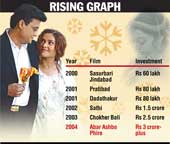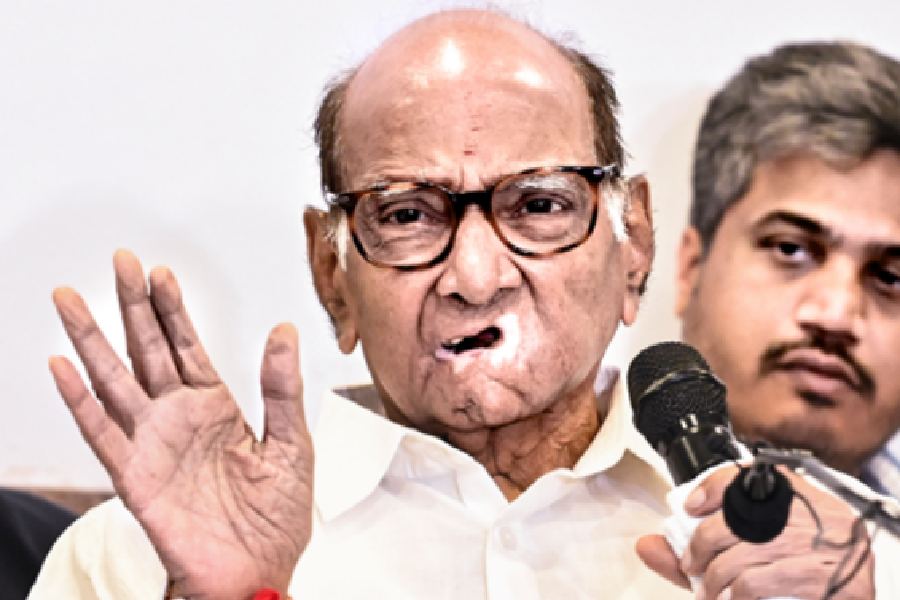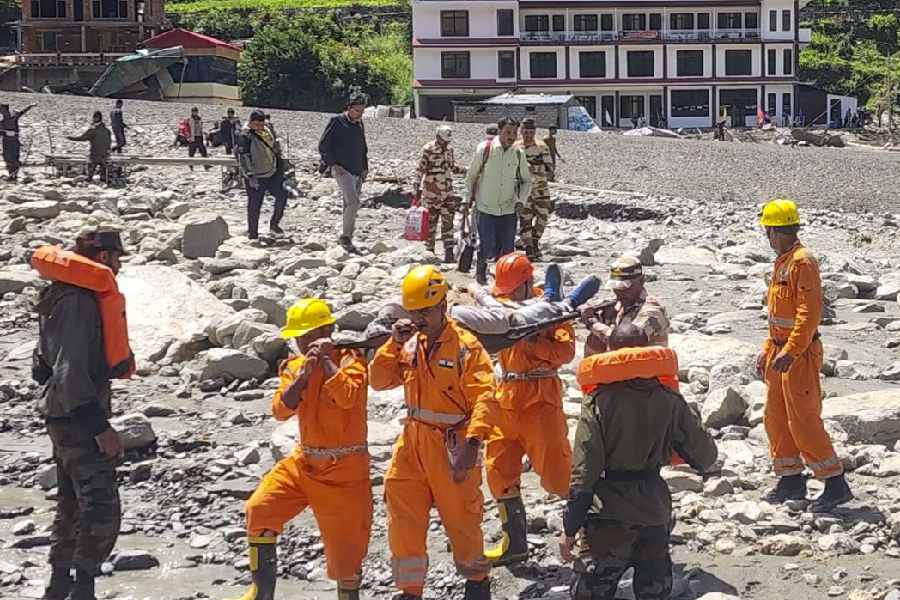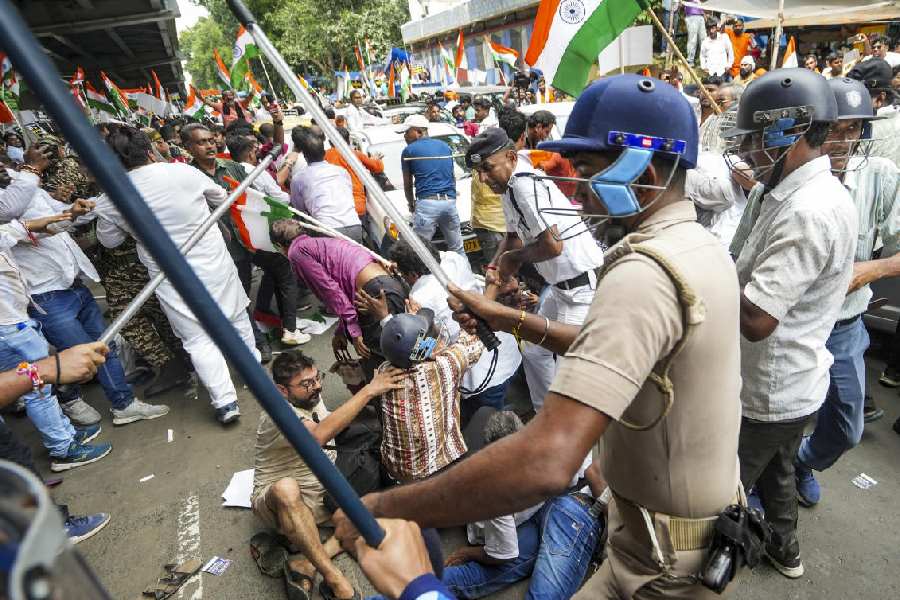 |
Better look over your shoulder, Bollywood; Tollywood now means business.
The Bengali film industry, which had its back to the wall till less than five summers ago, has silently been drawing in the droves and minting money. The inevitable spin-off — budgets bursting at the conventional Tollygunge seams to give products from our backyard a brand new look and feel. So, if Rs 15 lakh was the going market rate for the making of an average Bengali film in the 1990s, it vaulted the Rs 1-crore mark in 2003.
“Bengali films are a safe business ventures today,” says Arijit Dutta, owner of Priya and Globe cinemas. “There is no guarantee of recovering money with an English or a Hindi movie. But 90 per cent of Bengali movies today not only recover the production cost but also earn money for their makers.”
The box-office figures back the tinseltown turnaround talk. Bombaiyer Bombetey is eyeing returns more than double its Rs 80-lakh investment. Another recent release, the Jeet-Priyanka starrer Sangee, made for Rs 1 crore, is expected to gross no less than Rs 5 crore. The duo’s 2001 release Sathi, costing a crore and a half, is still running in a handful of halls and the collections are touching the Rs 6 crore mark.
Of the 45 films released in 2003, five are hits, seven super-hits. Most of the others recovered costs. “Compare this to the 150-odd releases from Mumbai, of which barely four or five clicked in the eastern territory,” says the president of the Eastern India Motion Pictures Association.
As a result, if 50 per cent of the theatres earlier screened English or Hindi films, today “80 per cent halls” have Bengali films running, and not unsuccessfully. Mitra, Priya, Jaya, Deboshree, Ajanta, halls that were bound to Bollywood, would now rather take on a Tollywood talkie.
Another sure sign of a boom — moneybags from far beyond the Bengal borders gravitating towards Tollygunge. If the Aparna Sens and Rituparno Ghoshs can almost pick their producers, Sandip Ray’s Feluda flick was backed all the way by Hyderabad’s Ramoji Rao. NRIs are ready to rub shoulders with the Sahara Pariwar and the Subhas Ghais as they all look east.
On the floors now is “the costliest film ever made in Tollygunge” — Ravi Ojha’s reincarnation drama Abar Ashbo Phire (see box), the budget for which will cross Rs 3 crore, beating Chokher Bali by a good Rs 50 lakh. “If the sets are drab, the technique is two decades old and the locations are the familiar Falta or Digha, why would people want to see Bengali films when there are options of English and Hindi films in the next hall and serials at home on TV?” asks Ojha, who will soon be off to Mumbai to shoot “Bengal’s first underwater sequence”.
Directors have been forced to shift their stance in order to survive, feels Srikant Mohta of Shree Venkatesh Films, whose Sasurbari Jindabad introduced cinemascope in 2000, Pratibaad had the first car-blast in 2001 and Sathi replicated a street on the sets, complete with cinema halls, passing cars and overbridges, in 2002.
The technique is finally trying to keep pace with the times. “We cannot go on cheating the audience, making shadows of trees pass behind a static set to indicate a compartment of a running train,” smiles director Haranath Chakraborty.
The films are shot on hi-tech cameras and make their presence heard in Dolby, even at a Minar, Bijoli or Chhabighar. “Till six years ago, we were shooting on 16 mm or 35 mm. Today, cinemascope is the benchmark, so what if the rental for an Arriflex 435 (on which the climax of Champion was shot) is Rs 10,000 daily, while for 16 mm it was Rs 1,000,” says Mohta.
Post-production work is also done down South or in Mumbai laboratories, doubling costs.
Then there is the publicity spending. “Earlier, investment on this count was nil. Today, for Chokher Bali, we spent Rs 35 lakh,” reveals Mohta. Tollywood’s one-man hit machine Prosenjit pitches in: “Now we do separate shoots for posters.”
Back from a two month-long stint in Hyderabad, shooting for three Bengali films, the actor with six success stories in 2003, names the bumper success of the big-budget Sasurbari Jindabad as the turning point.
“If a product is making money, the producer gains the confidence to invest,” says Prosenjit, adding that the audience for Bengali films has multiplied, with the great divide between parallel and mainstream films being all but bridged.
And things can only get bigger and brighter from here. “The next step is corporatisation of the industry and spread of Bengali mainstream films to cinemas abroad,” signs off the Sahara Entertainment vice-president, before responding to yet another call for “action…”.










